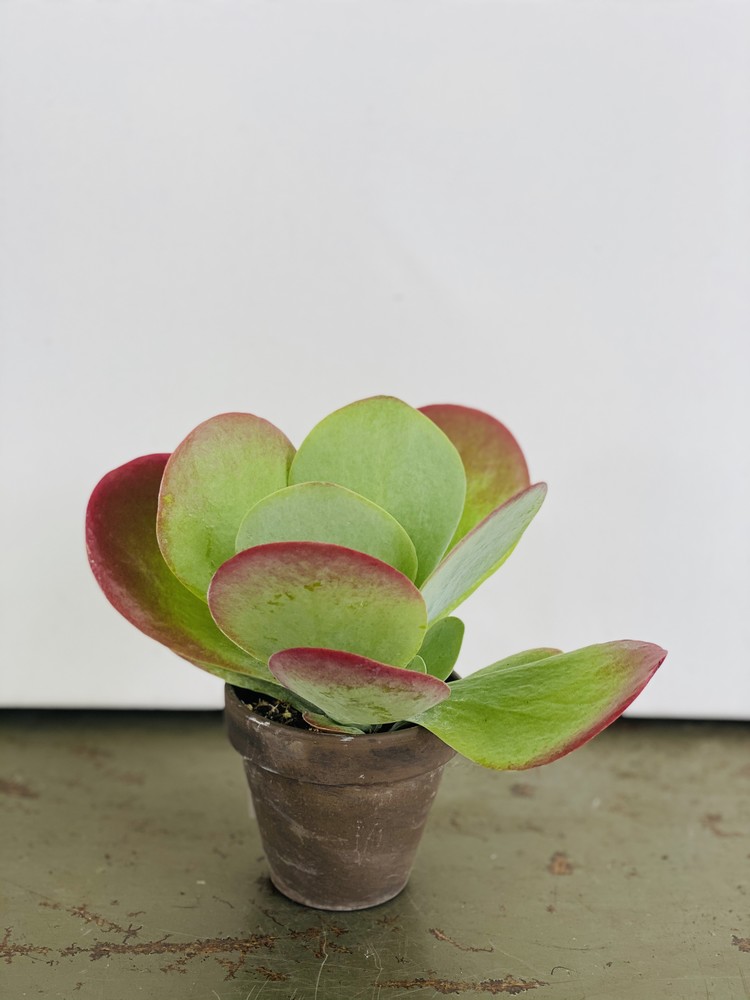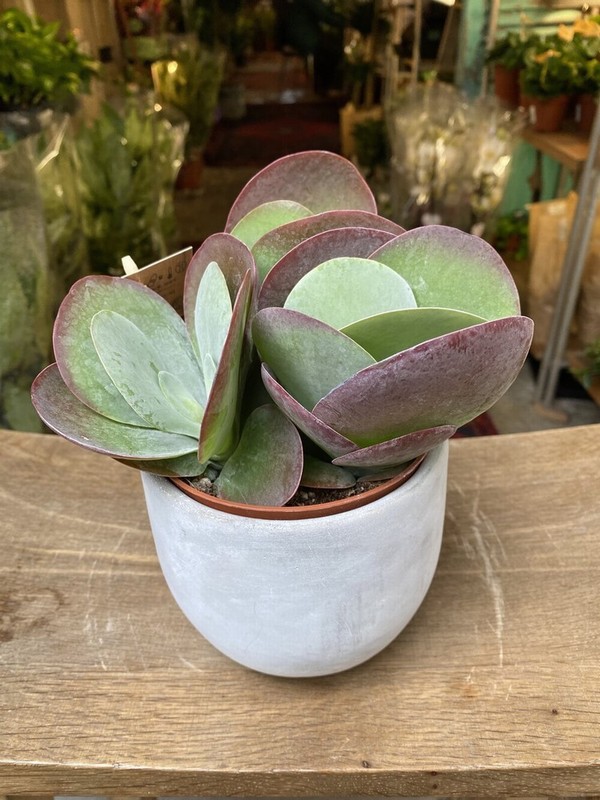Kalanchoe Thyrsiflora – Flapjack Succulent
£9.99
Description
The
The Kalanchoe thyrsiflora is easily recognizable by its characteristic fleshy leaves, shaped like paddles, stacked like a bunch of flapjacks. The gray-green leaves form a rosette and are about 3 to 4 inches long and wide. They turn red on the edges in high light and are covered in a white powder. More on this later.
Kalanchoe Thyrsiflora Care
The paddle plant is part of the
Crassulaceae family and is native to dry, rocky areas in South Africa. It likes full sun, infrequent watering, and low humidity.Light Requirements
The Kalanchoe thyrsiflora plant prefers
bright light to full sun. Indoors they do best in a bright, sunny window.The brighter the light conditions, the more pronounced the red leaf margins on the otherwise green leaves will be. Leaves will stay greener in low light.
If you can not give your plant enough natural light, consider getting a
grow lamp.Avoid too much direct sunlight
on hot summer days. Dry, brown spots on the leaves can be a sign of sunburn. Move your plant further away from the window, or filter the light with a sheer curtain.Paddle Plant Watering
Paddle plants are
very drought resistant, they do not like soggy soil.In their native habitat, flapjacks go through long dry spells followed by heavy rainfall. While waiting for rain or indoor watering, they
store water in their leaves.Indoors,
allow the soil to dry out before watering generously.To check if it is time to water your paddle plant,
feel the leaves and inspect the soil.Leaves should feel firm.
Drooping, wrinkled leaves drying up is a sign your plant needs water.The
soil should be dry before you water it. Stick your finger one to two inches below the surface. If it feels moist, don’t water but wait one or two days and check again. If the soil feels dry, go ahead and water thoroughly to saturate all of the soil.Fertilizing
Kalanchoe plants generally don’t need a lot of fertilizer. You can fertilize to supplement poor soil or give your plant a boost during the growing season.
Use a diluted
succulent fertilizer to feed your indoor paddle plant two to four times a year in spring and summer.Don’t fertilize in winter when the plant goes into dormancy and growth slows down.
Also never fertilize if your plant is recently repotted or is having issues.
Fertilizer is not a plant medicine. It will only stress out an already stressed-out plant. Analyze, adjust, and when your plant recovers, continue your normal care routine.Humidity
Paddle plants are not very needy when it comes to humidity levels. They can grow in average household humidity. No need for misting either.


